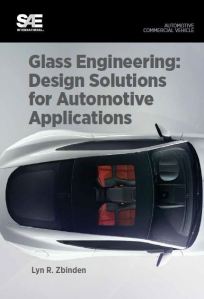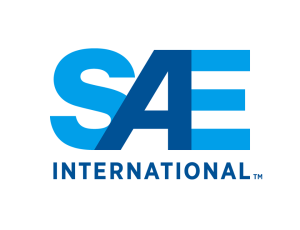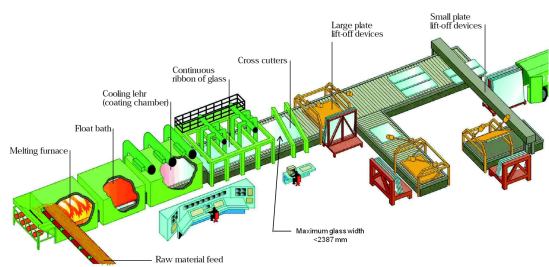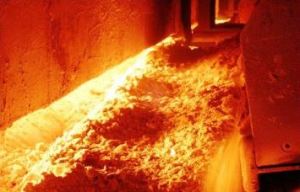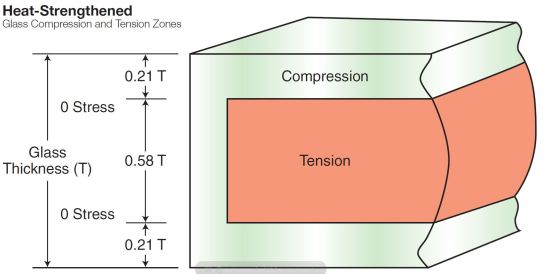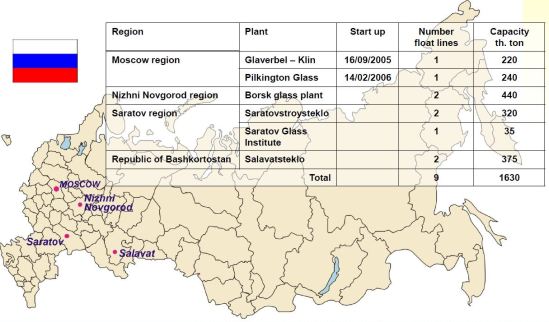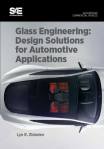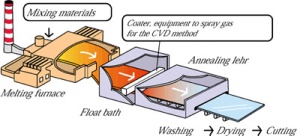“Facebook wants to build the next major computing platform, which Zuckerberg believes could be augmented reality and Oculus. He also wants to bring the internet to more people through Internet.org.”
Read more: http://www.businessinsider.com/zuckerbergs-3-5-and-10-year-facebook-plan-2014-10#ixzz3HYbURZOM
Displaying navigation information on car windshields may become reality in less than a decade. If thin, transparent and curved display panels could be attached to a windscreen, drivers would be able to see navigation information displayed there.
There are challenges to this application, namely cost and durability. The inside surface of a windscreen (surface 4) takes abuse, such as parking stickers. This has been the main factoring for not using polycarbonate as the inner layer. Previously HUD worked with aid of a wedged Poly Vinyl Butyral (PVB), looks like that may change. Head-up displays make driver and vehicle information easily accessible by projecting it onto the windshield just below the driver´s line of sight.
Without taking the eyes off of the road, drivers are informed of important vehicle data, such as speed, engine warnings or navigation data. For its realization a wedge shaped PVB-film is necessary. The wedge shaped film avoids the formation of echo images. Those echo images are dependent on the angle and the thickness of the windshield as well as the angle of incidence of the beam.
Standard wedge angles are defined in order to avoid special developments for every type of windshield. For production of the wedge shaped film small flexible extrusion lines up to a film width of 1200mm are necessary. Colour band film is also available. The loss of thickness during the stretching process of the film has to be compensated in the production process. The related technology is expected to become commercialized by no later than 2016.

Recently, LG Display unveiled the world’s first transparent and curved displays. In order to use the display for windshields, these two technologies must be combined, so that the screen becomes both transparent and curved. The transparency also needs to be improved, she added. The new LG transparent OLED display features a transmittance of 30%, up from 10% for conventional LCD panels. But, to make the panel for car windshields, the transmittance rate needs to be pushed up to over 60%.
The world’s first flexible display developed by LG Display
This is not simple because most electrodes which are used for display panels are opaque. Currently, research is being carried out to find alternative materials such as graphene, which is transparent and conducts electricity.
There is also a visibility issue because users may not be able to clearly see the information displayed on the screen during the day, when it is brighter outside than it is inside the car.
Apart from the technical hurdles, safety issues still remain as the windshields would hinder the drivers’ visibility. This is why transparent displays for vehicles will first be used for entertainment purposes ― made for passengers in the back seat or riding shotgun, as I wrote about in a previous column
Regarding the visibility issue for the passenger seats, companies are developing a “shutter” technology, which is inserted into display panels to make the background black. This will have the same kind of effect you would have when you draw the curtains at home to get a clearer image on your TV screen.
According to sources, the global transparent display market will reach $87 billion by 2015.
Head-up displays with “augmented reality,” the technology that employs much of the windshield as a display area for data and images, is poised to significantly change how drivers see the road.
Auto supplier Continental AG says it has lined up a production contract to supply its new HUD technology for an unnamed customer in 2017.
It allows you to have your eyes constantly on the road, You can travel blindly for quite a few meters.”
Suppliers use the phrase “augmented reality” to describe large, multicolor head-up displays that superimpose data or images across much of the driver’s field of vision through the windshield.
Companies such as Nippon Seiki, Harman, Visteon, Bosch, Panasonic, Delphi and others are developing head-up displays, and Denso has said it will market its own version of augmented reality.
Continental displayed its technology this month to reporters in a modified Kia K900 on public roads near Babenhausen, a town near Frankfurt where Continental designs and produces head-up displays.
For the motorist, the transition from a conventional HUD to augmented reality is like switching from a small, portable black-and-white TV to a big-screen TV.
There’s a big difference in image size, color and definition, and that allows engineers considerably more freedom to display useful data for the motorist.
Continental’s new unit is actually two HUDs packaged together. The first is a conventional unit that displays the vehicle’s speed, directions for the motorist’s next turn and a lane-departure warning.
The basic unit’s display floats about 8 feet in front of the motorist through the bottom of the windshield, a typical HUD position.
The second unit produces a virtual display about 25 feet in front of the motorist. When the navigation system indicates an upcoming exit, a series of virtual blue arrows floats along the route to be taken.
In addition to turn-by-turn information, the second unit displays a more elaborate lane-departure warning, collision alerts and highlights of cars on the road ahead that have been detected by the vehicle’s intelligent cruise control.
A major issue for market acceptance is the bulk of the optics box inside the instrument panel. The prototype optics fit inside a 13-liter container; Continental engineers say they will shrink the production version to 11 liters. A smaller, less expensive “combiner” HUD — which doesn’t require an expensive, custom-designed windshield — could prove to be the technology of choice for small vehicles. Combiner HUD images appear on a small, clear plastic panel mounted behind the instrument panel. These units can display basic information, but not the big, colorful images of the more expensive unit.
Augmented reality HUD has the potential to change the auto industry’s approach to instrumentation.
In Samsung’s design, see FIG. 20 noted above illustrates an example in which the transparent display apparatus is implemented in a vehicle. To be specific, the transparent display is implemented on the front glass of the vehicle. Moreover, patent FIG. 20’s information appears on the front glass while the user drives their vehicle. The information #30 noted as “Vehicle in front slowing down” is one example of a smart transparent display system. The types of information that could be displayed include condition of the vehicle, a driving condition, the surrounding environment, etc. For example, GPS information, fuel status, speed, RPM, traffic, or other vehicle information may be displayed on the front glass.
display of FIG. 20 may alternatively be implemented as a projection type of system. Another alternative could involve a secondary sensor may trace the gaze of the user and the position of displayed information that may be moved according to the user’s gaze.
Remember the stunning heads-up display shown on the amazing BMW i8?
Well, you can’t have it — at least, not yet — but several manufacturers are working hard to improve the humdrum HUDs that many of us rely on for mundane details like vehicle speed and remaining fuel. The latest such gadget to cross our desk is called Navdy.
There are several things to like about Navdy:
- For starters, its aftermarket, so nearly any kind of car can use it.
- It also uses a gesture-based control system, meaning that, with a little bit of trial and error, drivers should be able to interact with it without much problem.
- Navdy uses the apps that are already on your phone (Android and iPhone, for now). Navdy will allow you to control music, messaging, and more using the apps you already know and love. To minimize distractions, users have control over which app notifications appear and when, and parents can block certain apps and features when kids are behind the wheel. Navdy is developing more apps in house to augment the device’s functionality.
- Navigation looks especially nice and useful.
That said Navdy isn’t without its flaws:
- At a retail price of $499, it’s expensive.
- It won’t ship until early 2015
- It uses Bluetooth

Glass will soon be accessible for the drivers on their windscreens of their cars. This innovation is for professionals, who want to remain connected while driving as well. Earlier, the time spent driving could not be utilized for work and hence got wasted, but now this new technology would allow the users to focus on the road while driving and at the same time be able to pay enough attention to their work, as well.
The idea of facilitating work while driving has been brought by a San Francisco-based start-up Navdy that has unveiled Google Inc. For this, the company has designed an aftermarket console that has the capability of combining a projection display with voice and gesture controls. This system is designed to find place between the steering wheel and the windshield. At a distance of nearly six feet from the windshield a transparent image is projected by this system.
The technology called Navdy HUD (Head-Up Display) system is designed to facilitate connectivity of iPhone and android devices via Bluetooth and sharing of data via WiFi. It also provides navigation services by connecting with Google Maps and displaying the projection on the windshield. If by chance a call or message is received while using the navigation service, the screen will split into two-parts with each part displaying one of the two. While the calls can be easily taken by giving thumbs up and hung up by swiping through the windshield, messages can be read aloud to the driver.
The system is compatible with all the cars manufactured after the year 1996, and offers multiple features such as displaying the car alerts including speed, miles-to-empty and battery-voltage. The users can, also, enjoy numerous other services such as Spotify, Pandora, Google Music and messages from the social media sites, but cannot scroll through the Facebook news feed with the Navdy HUD system.
Navdy is a device that will project virtually everything you now get on your mobile device onto the windshield of your car. Think of the windshield becoming a virtual movie screen that shows navigational data from your GPS unit, incoming phone calls, text messages and more. It responds to voice commands and gestures.
Navdy is reported to have racked up $1 million in pre-orders by discounting the device, which the San Francisco-based company later intends to market for $500. Connect it to your iPhone or Android and you’ll never have to reach for them again while you are driving. As Navdy’s marketing puts it, “No more looking down to fumble with knobs, buttons or touch screens.”
The company calls its product “The future of driving.”
While Navdy advertises itself as an antidote to distracted driving, the Internet was roiling Monday with voices challenging that. Streetsblog called it a “Scary new app.” James Sinclair’s blog at Stop and Move elaborates on those fears:
“When we’re focused on reading text, the world in the background may technically continue to be perfectly clear (as our eyes aren’t limited in focusing like cameras are), but that doesn’t mean our brain is processing it. In reality, it’s just as blurred because we’ve stopped paying attention to everything but the text. Go ahead, look at the image above and read the message — that’s all you really see.”
“Navdy may be safer than having a phone in your lap and looking down at it, but it doesn’t mean it’s a huge improvement. In fact, by making the distractions even more accessible, it might just mean more dangerous results. When your phone vibrates, you can choose to ignore it, when your new message pops into your windshield, showing that restraint becomes a little more difficult.”
The projected text message Navdy uses in its advertising is rather benign, Such as “Want to meet for coffee?”. While pondering a cup of coffee, the driver might notice that bicyclist to the right and the San Francisco trolley car up ahead. But what if the text was something more risqué, like, say, “I want to tickle your ear with a feather boa?” No distraction there?
The concept isn’t exactly new. In fact, Land Rover bragged that all of the glass in its Discovery Concept Vision, which debuted in New York earlier this year, would be “Smart Glass” capable of displaying images, directions, and point of interest (POI) information to passengers.
Though Land Rover spoke of this technology in virtual concept form, Jaguar taken the tech one step further and announced that its new XE sedan with offer a laser-projected Head-Up Display, providing drivers with unprecedented augmented reality information about the world outside the car.
https://www.youtube.com/watch?v=rP7x63f7ecQ
The system will project sharp, high-contrast images on the windshield using a device that is smaller and lighter than today’s HUD projectors. These laser diodes will contribute to a larger field of view with higher contrast and an extended range of reproducible colors.
The Land Rover Discovery Vision Concept is perhaps one of the most important and impressive vehicles I’ve ever covered. It uses lasers. It has touch screens, everywhere. Heck, it is a touch screen. It knows where you’re looking and puts information there. It can be driven remotely. And that’s just the beginning.
Vision technology
Not only does the Discovery Vision Concept have a “Transparent Hood” which uses cameras and augmented reality to make the hood disappear during off-road and parking scenarios. It is also capable of displaying images; every single piece of body glass – including the panoramic moon roof – is as well.
Called “Smart Glass”, the entirely transparent glass can display images just like a computer screen. This allows for all kinds applications. Perhaps most exciting is combining eye-tracking sensors and navigation information to relay point of interest (POI) information to passengers.
The Smart Glass can be used for more than just data. It can also be used to tint and dim the interior, with infinite gradients – or just blacked-out with the swipe of a finger. Imagine, too, using the panoramic moon roof to display a screensaver image or mood lighting. This isn’t the only use of screens in the cabin. Two small OLED screens are embedded into the steering wheel and can be used to operate the infotainment system. Glance through the steering wheel and the driver is privy to a digital instrument cluster on a three-million pixel high-res screen. In the center of the cabin are two more high-res touch screens, which display system menus. The lower of the two screens flips up to reveal a storage cubby, which also includes an inductive smartphone-charging tray.
The Japanese semiconductor supplier Nichia Corp. has announced development of blue and green laser diodes that it says are specifically designed for automotive HUDs. The laser diodes are slated for production in October, 2015. According to Nichia, these laser diodes will contribute to a larger field of view with higher contrast and an extended range of reproducible colors.
The Future Now
As I wrote in a previous column, General Motors has been working on a new generation Heads up Display system as well. There are many ideal vehicles to set to utilize developing technology by General Motors Research and the students from Bezalel Academy of Art and Design in Israel.
GM previews augmented-reality windshield
https://www.youtube.com/watch?v=94dg2D-jAhM
Whichever carmaker rolls it out, using components from whichever suppliers, there is much more to come. To bridge the gap from a simple HUD projecting rudimentary data ahead of the driver to full augmented reality, a few technical improvements are needed.











